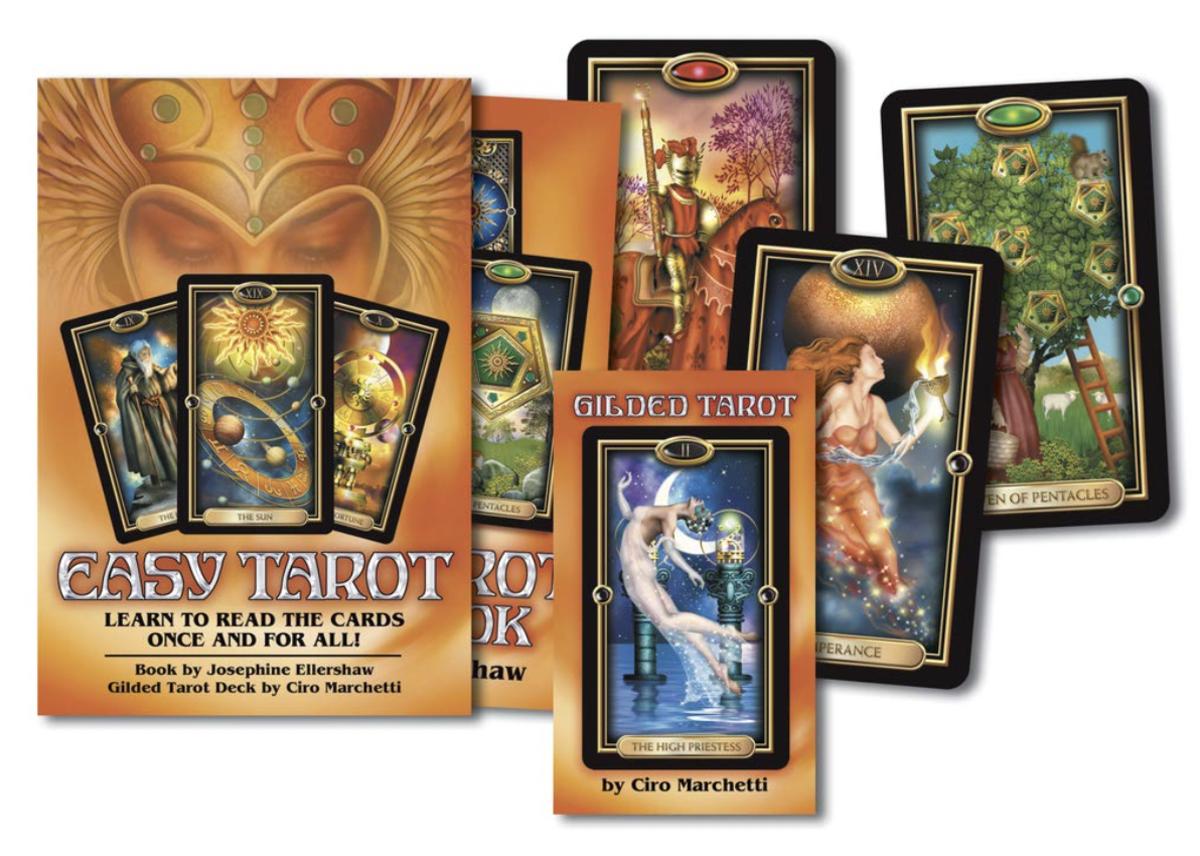
There are some basic spreads for tarot that you can attempt. There's the Situation-action-outcome tarot spread, the Past-present-future tarot spread, and the Celtic cross tarot spread. They are simple to learn and can be used as a starting point for anyone who is just beginning.
Simple tarot spreads
You don't need a lot of experience to get started with Tarot Spreads. They are simple but can give you a lot of useful information. They are excellent for general overviews or interrelated issues. The free-form nature of the Tarot Spreads allows for very flexible interpretation. These are just a few examples of Tarot Spreads.
The situation you are trying to understand is represented by the first card. The second card identifies the obstacle or problem that must be overcome. The third card looks at the past. The fourth card depicts the future. The fifth card displays the subconscious and conscious thoughts of the individual. The last card, which is opposite the previous one, shows the perceptions of another person.

Situation-action-outcome tarot spread
The Situation. Action. Outcome tarot deck is a 3-card spread that examines possible outcomes to a situation. It is not intended to be a love-tarot reading but is very popular for those who have questions about relationships or love. Although it may not give you the full picture of a situation, it does reveal aspects that you may not have noticed otherwise.
This type of spread is excellent for getting more information. It is commonly used for love tarot and has three cards in the top row, and two cards in the bottom. The spread is drawn by drawing the first card from each row. This represents you. The second represents your partner.
Past-present-future tarot spread
The Past-present future Tarot spread is powerful and helps you connect with your past and present. You can use this spread in many different ways, depending upon your preferences. The spread includes three cards that are arranged side by side. These cards are arranged so that the Four Elements run across them, covering work, relationships, problems, and money.
The Past-Present-Future Tarot spread is one of the most popular three-card spreads. This spread is particularly useful when you are asking about timing. The first card represents the elements of the past that are influencing the present. The second card is what's currently happening, while the third represents the likely outcomes. The Past-Present Future Tarot Spread can be used effectively if you meditate on the first card and visualise it fitting the question.

Spread Celtic cross-tarot
The Celtic cross Tarot Spread, one of the most traditional layouts, is one. It can be used for specific questions or just to get a general sense of how your life is going. There are many variations to this layout. Each position has a slightly different meaning.
The Celtic cross is divided into two sections: the first section includes the querent and the second section is for the block. The third section is the root of your problem, or the energy hidden behind the issue.
FAQ
Why do we have hobbies?
Hobbies are an integral part of our daily lives. They allow us to relax, unwind and think creatively. You can also learn new skills and develop lifelong interests.
Hobbies help us to find meaning and purpose in our lives.
They are great for spending your free time when there's not much else.
They're also fun!
If you don’t have the time to do a hobby, you likely don’t have any other hobbies.
Look at all the options. You might consider starting a hobby if you don't already have one.
What is a hobby that kids can do?
Any activity that kids enjoy as a hobby is something they do outside of the normal routine. Kids might enjoy drawing pictures, making things, painting, writing, crafting, and other activities.
Many parents are concerned that their children may get into trouble if allowed to do as they please. However, this is not always true. They won't get into trouble if your child is safe and does not cause harm to others or themselves.
It is important that people remember that simply because they love doing something does not mean they will always do it. They might decide to draw instead of write if they enjoy drawing pictures.
There are many different hobbies, so it is up to you which one you love the most.
What hobbies are best for introverts and what types of hobbies would they enjoy?
Introverts can focus on only one thing at a given time. They enjoy solitude and prefer to read, write, play music, watch movies, etc.
They also like to be alone. However, they don't like socializing all day. In fact, they can often be bored when surrounded with people.
Introverts will often choose hobbies that require them alone. For example, they may enjoy reading books, listening to music, taking photographs, painting, writing poetry, etc.
Many introverts choose to live alone. They are able to concentrate on their hobby while not being distracted by other activities.
How do I get started with my new hobby?
It is important to choose the type of hobby you want to start.
Passion is key once you have chosen your topic.
It is important to know the reason you want to begin a hobby. This will help you find direction and a purpose.
After you have decided on the type of hobby you want to pursue, it's time to start planning.
You should think about the equipment you'll need.
You might need to consider whether you should attend classes or seminars.
Make sure you have enough space for your hobby.
You might also consider joining a club. These groups are often supportive and offer advice.
The last thing you should do is think about how much money it would cost to pursue your hobby.
Statistics
- In comparison, men in the “no humor” condition were refused 84.6% of the time and were only accepted 15.4% of the time. (time.com)
- The intensity of the dialogue partners' bond at the end of the forty-five-minute vulnerability interaction was rated as closer than the closest relationship in the lives of 30 percent of similar students. (time.com)
- Much of this decline reflects the fact that teens are less likely to work today than in the past; among employed teens, the amount of time spent working is not much different now than it was around 2005. (pewresearch.org)
- Studies show that just six minutes of reading can reduce stress levels by 60 percent. (oberlo.com)
- 37% Video Games 36% Travel 36% Health and Fitness (quizexpo.com)
External Links
How To
How to start gardening
Gardening is one among the oldest forms. It takes patience, persistence, determination, and perseverance. It is important to choose the right location for your garden. This could be on a large piece of land or in your backyard. Next, select the kind of plants that are most appealing to you. Do you prefer flowers over vegetables? Some people enjoy growing herbs while others love raising livestock such as rabbits. Before you decide which crops you will plant, consider the amount of space you have. If you live somewhere that has cold winters, it might be a good idea to grow berries or fruits.
Once you have selected the plants you wish to plant, you should prepare your soil. How your plants perform is dependent on how well the soil you use. A good soil has organic matter which helps to feed the roots of your plants. Organic matter includes leaves, twigs (grass clippings), manure, compost, and manure. Once your soil is prepared, it's time to add nutrients. You might need different amounts, depending on the species of plants that you want to grow. An online fertilizer calculator can help you calculate these values. Many fertilizers are on offer, so make sure that you know which one you are buying.
Now, wait for your seeds to germinate after you have prepared your soil and added the necessary nutrients. The process can take between 2 and 3 months depending on how hot or cold it is in your region. Once the seeds have sprouted you will need to water them often. Problems can arise if you water your plants too frequently or too little. Overwatering can cause problems. Overwatering could lead to root rot as well as fungal diseases. Consider that plants generally need less water in the warmer months than they do in winter. You should also remember that some plants will need to dry out once they have been watered. For example tomatoes should be kept slightly moist and not wet. Soggy soil is not good for them. After the flowers have stopped, they must go into dormancy. The time when plants stop producing new life and store energy for the next season is called dormancy. During dormancy, the plant stops sending signals to its roots telling them to produce food. Throughout this period, the plant stores energy. If temperatures fall below freezing or the plants are not getting enough sunlight, they will die.
If you live in an urban environment, you may find yourself limited in the kinds of plants that you can grow. Urban areas tend to contain concrete sidewalks, roads, buildings, and parking lots that block sunlight from reaching the ground. Concrete absorbs light which blocks sunlight from reaching the ground below. Because of this lack of sunlight, many plants cannot survive in cities. Many plants can still thrive in urban settings. Many trees, shrubs, perennials, and other plants can adapt to urban life. Many annuals can also be grown indoors in container gardens. Container gardens allow you to bring fresh greenery into your home year-round regardless of the weather outside.
Now that you have decided where to place your garden, chosen what you will grow, and prepared your soil, you are ready to plant!